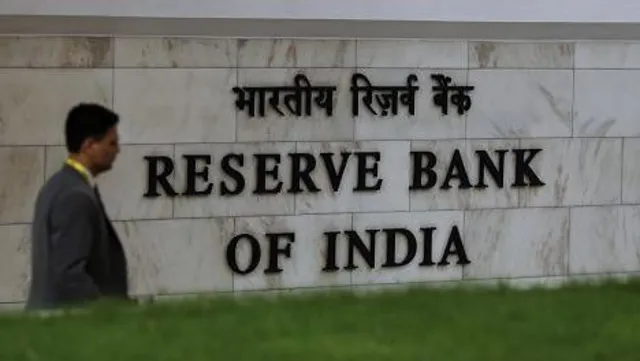
In a significant economic development, the Reserve Bank of India (RBI) has announced a reduction in interest rates for the first time in five years. The move comes in the wake of a slowing economy, global uncertainties, and efforts to stimulate growth within India. The rate cut aims to provide relief to businesses and consumers alike by making credit more affordable, and it reflects the RBI’s proactive approach to managing economic
On February 7, 2025, the RBI slashed the benchmark repo rate by 0.25%, bringing it down to 5.50%. This marks the first rate cut since 2020 when the central bank had implemented a series of cuts in response to the pandemic-induced economic slowdown. However, the decision to reduce rates now is seen as a response to a combination of factors, including sluggish domestic growth, low inflation, and external pressures from global economic trends.
The RBI’s monetary policy committee (MPC) cited the need to support economic recovery and provide a boost to investment and consumption. The rate cut is expected to have a ripple effect across the economy, lowering borrowing costs for businesses and consumers, especially in sectors like real estate, manufacturing, and infrastructure, where access to cheaper credit is vital for growth.
India’s economy has been facing headwinds in recent months. Despite being one of the world’s fastest-growing economies, growth has slowed down in the face of both domestic challenges and a turbulent global economic landscape. Inflation, though under control, remains a concern, while the global slowdown, trade uncertainties, and geopolitical tensions have further dampened investor confidence.
The Indian government has also been grappling with weak domestic demand and lower private sector investment. In such an environment, the RBI’s rate cut is seen as a crucial step in providing the much-needed liquidity to fuel economic activity. By lowering borrowing costs, the central bank hopes to spur investment in key sectors and encourage consumer spending, which has been
The rate cut is expected to benefit several key sectors of the Indian economy. For the housing market, which has shown signs of recovery in recent years, lower interest rates could translate into reduced home loan rates, making property more affordable for middle-class buyers. Similarly, sectors such as automobiles, consumer goods, and small businesses, which are highly dependent on credit, stand to gain from lower borrowing costs.
For manufacturers and exporters, the move could provide the relief needed to improve cash flow and reduce the cost of production, making Indian goods more competitive in global markets. Additionally, small and medium-sized enterprises (SMEs), which often struggle to access affordable finance, could benefit from the RBI’s more accommodative stance.
While the rate cut is largely seen as a positive move, there are concerns about the potential impact on inflation. Although inflation has been under control in recent months, there is still the risk that lower interest rates could spark higher demand, which might lead to price increases in the economy. The RBI has made it clear that it will continue to monitor inflation trends and adjust its policy stance if needed, signaling a cautious approach to rate cuts.
The RBI’s primary mandate is to maintain price stability while fostering economic growth. Therefore, the central bank will need to carefully balance its efforts to stimulate the economy with the need to keep inflation within the target range of 2-6%. The decision to cut rates is thus a calculated move, aimed at boosting growth while maintaining a close watch on inflationary pressures.
India’s interest rate cut also comes at a time when central banks around the world are grappling with similar challenges. Many developed economies, including the U.S. and the European Union, have been tightening monetary policies in response to inflationary pressures. However, India’s move is a counter-cyclical measure designed to counterbalance domestic sluggishness and encourage investment, especially in a global environment where growth is uncertain.
By reducing interest rates, India aims to retain its competitive edge in attracting foreign investment. Lower interest rates can make India more appealing to investors looking for better returns in emerging markets, helping to stabilize the currency and potentially boosting the country’s financial markets.
This rate cut marks a shift in the RBI’s monetary policy stance, and while it remains cautious, it signals a readiness to take further action if necessary. The central bank’s decision to cut rates now reflects its ongoing commitment to supporting economic recovery, but it will continue to assess macroeconomic conditions and adjust its policy as required.
Some economists speculate that further rate cuts could be on the horizon if the economic recovery remains sluggish. However, much will depend on how inflation evolves and whether domestic demand picks up as expected. The government’s fiscal policies and external factors such as global economic conditions will also play a significant role in shaping India’s economic trajectory in the coming months.
India’s decision to reduce interest rates for the first time in five years is a significant development in the country’s economic landscape. It reflects the government and the RBI’s recognition of the need for targeted stimulus to revitalize growth and support key sectors of the economy. By making credit more accessible, the RBI hopes to fuel investment, consumption, and ultimately, job creation. However, the balance between fostering growth and controlling inflation will be key to determining the success of this move.
As India navigates through the current global economic challenges, the focus will remain on supporting domestic growth, attracting foreign investment, and ensuring that the benefits of the rate cut are felt across all sectors of the economy. This rate cut could mark the beginning of a broader economic recovery in India, positioning the country for continued growth in the years to come.

